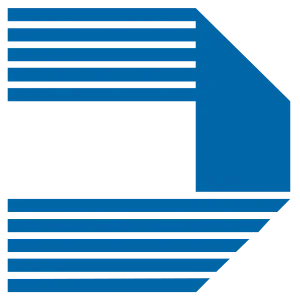Best 3 Year Fixed Mortgage Rates in Ontario
The 3 year fixed mortgage rate was Ontarios most popular rate in 2024, with over 50% of homeowners opting for this term.
However as we proceed into 2025, mortgage holders are starting to gravitate towards the 5 year fixed or variable, depending on their risk tolerance.
In the review article below, we look at why the 3 year fixed mortgage was so popular, and as we move further into 2025, if it will be the best fit mortgage for you.
Compare the best 3 year fixed mortgage rates Ontario from 18 leading Banks, institutional lenders and local Ontario Credit Unions.
Private: Template 3 Year Fixed
As of April 1, 2025
As of April 1, 2025
3 yr Fixed
Insured mortgage rates are typically for less than 20% down payment and are insured against default through the CMHC or comparable default insurer. This involves a one time insurance premium built into the mortgage principal. Maximums: 25 YR amortization, $999,999 purchase price. No refinances.
Insurable mortgages follow similar criteria as insured mortgages, but because these are 20%+ down payment/equity, there is no default insurance premium or additional cost built into the mortgage. Available for purchase and renewal, but not refinance/ equity takeout.
Uninsured mortgages are available for purchases of $1,000,000+ and refinance/equity take out transactions. Additional flexibility of uninsured mortgages includes optional 30 year amortization and more flexible borrowing limits.
-
 Altrua scans its database of 100+ for the best rates, then negotiates these rates even lower!
Altrua scans its database of 100+ for the best rates, then negotiates these rates even lower!Altrua Financial Mortgage Rates
3.79%
Balanced risk/reward.Payment: $18,94/mo
3.79%
More balanced risk/reward.Payment: $18,94/mo
3.99%
60 day rate hold, 10% pre payment on this promotionPayment: $18,94/mo
-

TD
4.34%
Payment: $18,94/mo
4.34%
Payment: $18,94/mo
4.39%
Payment: $18,94/mo
-

BMO
4.44%
Payment: $18,94/mo
4.69%
Payment: $18,94/mo
4.54%
Payment: $18,94/mo
-

CIBC
4.39%
Payment: $18,94/mo
4.39%
Payment: $18,94/mo
4.49%
Payment: $18,94/mo
-

RBC
4.29%
Payment: $18,94/mo
4.29%
Payment: $18,94/mo
4.39%
Payment: $18,94/mo
-

Scotia
4.34%
Payment: $18,94/mo
4.59%
Payment: $18,94/mo
4.59%
Payment: $18,94/mo
-

National Bank
4.19%
Payment: $18,94/mo
-
Payment: -
4.19%
Payment: $18,94/mo
-

Manulife
4.39%
Payment: $18,94/mo
4.54%
Payment: $18,94/mo
4.79%
Payment: $18,94/mo
-

Desjardins
4.39%
Payment: $18,94/mo
4.39%
Payment: $18,94/mo
4.49%
Payment: $18,94/mo
-

Laurentian Bank
3.99%
Payment: $18,94/mo
4.49%
Payment: $18,94/mo
4.49%
Payment: $18,94/mo
-

First Ontario
4.54%
Payment: $18,94/mo
4.54%
Payment: $18,94/mo
4.54%
Payment: $18,94/mo
-

Alterna
4.09%
Payment: $18,94/mo
4.44%
Payment: $18,94/mo
4.64%
Payment: $18,94/mo
-

DUCA
5.59%
Payment: $18,94/mo
5.94%
Payment: $18,94/mo
6.49%
Payment: $18,94/mo
-

MCAP
4.39%
Payment: $18,94/mo
4.64%
Payment: $18,94/mo
4.64%
Payment: $18,94/mo
-

First National
4.09%
Payment: $18,94/mo
4.39%
Payment: $18,94/mo
-
Payment: -
-

ICICI
6.84%
Payment: $18,94/mo
6.84%
Payment: $18,94/mo
6.84%
Payment: $18,94/mo
-

CMLS
4.39%
Payment: $18,94/mo
4.74%
Payment: $18,94/mo
4.64%
Payment: $18,94/mo
Why the 3 Year Fixed Mortgage Rate Was Ontarios Most Popular Rate in 2024
Since mortgage interest rates are the single biggest expense for many in Ontario, it makes sense to look for the best way possible to save on this cost. In short, the three-year fixed rate has been popular because homeowners appreciate the potential for it to help save money, today and at renewal time, while protecting against short term interest rate fluctuations. Let’s take a closer look.
Slowing Economy and Decreasing Rates
Over the past 2 years, the economy has been seeing weakness, and this has, in turn, led to lower mortgage rates. Such economic weakness includes:
- Shrinking / no Canadian GDP growth, and negative per-capita GDP growth.
- Increasing credit card debt levels and reduced savings
- A moderating jobs/ employment market
- A slowing housing market
Renewal at a Lower mortgage rate
The allure of a 3 year rate is to renew at a time when rates are potentially lower.
However in 2025, as mortgage rates have already dropped approximately 2% off their highs, the potential for further significant drops are not the same as they were in 2023-2024. In fact, there is a reasonable chance that mortgage rates could be higher in 3 years if inflation picks up.
Given this many are re considering if it is safer to select a 5 year fixed rate below 4%. Or those who are comfortable with more risk and want to follow rates down, are gravitating towards the variable rate. So while the 3 year fixed rate remains popular, it is not the same risk/reward proposition as it was in 2023 and 2024.
Lower penalty with a 3 year
The way penalties work on fixed rate mortgages largely has to do with how much time remains in the mortgage term. If rates are either the same or lower, and there is a much longer term, the penalty can be extremely high to break a Fixed mortgage. However, if there is only a year, or perhaps a year and a half left in the term, the penalty may not be as large even if rates have dropped considerably. The closer you are to the end of the term, the more favourable the fixed rate penalty can be.
Because the end of the term comes sooner than in a five-year term, the likelihood of a higher penalty if the mortgage is broken decreases. Statistically speaking, about 20% of all mortgages are in some way broken/ paid out early during the term.
Will 3 year fixed mortgage rates still be ideal in 2025?
While there is no guarantee about the economy and mortgage rates over the years to come, our rate simulations demonstrate that the 3 year fixed mortgage rates Ontario provide will a good balance of safety and savings in 2025.
The 3 year fixed offers an element of medium term rate and payment predictability that may be desired with the 5 year fixed, without the need to wait 5 years for the mortgage renewal to gain a lower rate potentially.
However, as mortgage rates draw closer to 4% or lower, taking a 5 year fixed rate becomes a good idea to protect against the potential for higher rates in the future in case inflation rebounds unexpectedly. The 3 year fixed rate will not be as popular in 2025, giving up some share to variable rates and five-year fixed rates, but will continue to be a leading rate in Ontario and across Canada.
Risks of a three year fixed term
In 2025, the risks of a 3 year fixed rate have increased. This is because there is as much, if not greater likelihood that rates will be higher in 3 years than lower. In other words, there’s a chance that the economy could slump and lead to lower rates. But this would need to hold for 3 years without an economic rebound or without inflation. This is possible, but is less likely/ less probable than either an economic or inflationary rebound and higher mortgage rates.
Other Factors Affecting Fixed Rate Mortgages
Bond Yields
Fixed rate mortgages are priced against the Government of Canada Bond Yields. These Bonds trade on the market daily, like a stock, and when the Bond Yields move up or down, so do the fixed rate mortgages. The fixed mortgage rates are not priced directly in line with Bank of Canada overnight rate decisions. For example, if the Bank of Canada increases or decreases its rate by 0.25%, you are not likely to see the field rate move up or down that day. Only the variable mortgage rates will fluctuate directly with Bank of Canada rate movements.
Mortgage Lender Policies
Lenders will have times when they want to put the breaks on lending. They may see housing market risk or higher risk of non payments/ across the economy. So by increasing the ‘spread’ between Bond Yields and the mortgage rates banks offer, it:
(1) Earns them more profit per transaction to cushion against the risks, and
(2) Slows down the pace of borrowing in the riskier market.
Typically banks/ mortgage lenders do this all together so it’s difficult to see the spread increase. In 2025, the spread is relatively higher than it was over the past 10 years.
Once mortgage lenders feel comfortable about the market and economic risks, they will turn on the taps again by lowering the spread and seek to earn higher profits through higher volumes of lending.
Tips for Securing the Best Fixed Mortgage Rate
Improving Your Credit Score: Ensure your credit score is in its best form because, for securing the best fixed mortgage rate, this is where credit counts. As a basic rule of thumb, a good score will involve at least 1-2 credit cards for at least 2 years with no or minimal missed payments. If there is a missed payment, it should not be within the past 6 months. Keep the balance owing to less than half the card limit too. If credit may be an issue, connect with Altrua for advice.
Increase Your Down Payment: Down payment has more effect on mortgage rate than almost any other single factor. Interestingly, if there’s less than 20% down payment and it needs to be a CMHC default insured mortgage, then the rates are the lowest because there is no risk for the lender (they are insured against default). But due to the insurance premium, this may not be the lowest cost route. At 25% down payment or more, the rates can drop to 35% down payment where fixed mortgage rates are close to the CMHC insured rate.
Work with a Mortgage Broker: Working with the right mortgage broker can set you up for success. A good mortgage broker can do the shopping and much of the heavy lifting when it comes to working with the lenders. The result can be a smoother, more pleasant process that saves you money.

